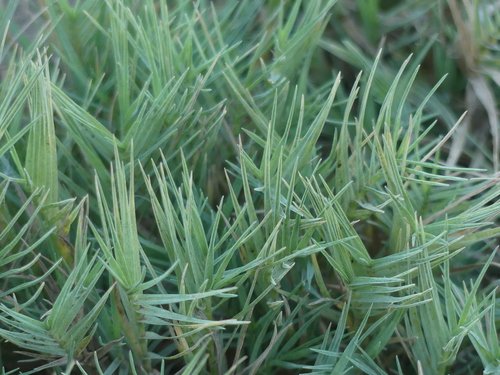Saltgrass
Distichlis spicata
Family: Poaceae
Rhizomatous to sometimes stoloniferous perennial grass, spreading almost indefinitely, reaching almost 2’ tall.
Full sun, best started on irrigation, but plants will spread outside and spread fairly wide.
This is a great grass for tortoise enclosures as the plant can keep up with the tortoise appetite. This species is extremely tolerant of saline conditions.
As with many native grasses, this species hosts many Lepidoptera larvae including the Alkali Skipper (Pseudocopaeodes eunus), Salt Marsh Skipper (Panoquina panoquin), the Wandering Skipper (Panoquina errans), and the Sandhill Skipper (Polites sabuleti).
Taken as a laxative, for pimples, as a heart medicine, for gonorrhea, cooked into a gum to treat colds, for loss of appetite, as a condiment, and the leaves and stems were used for food. Also used as a grain source by various tribes.
Distichlis comes from Greek distichos for two-ranked, a reference to the leaf arrangement, while spicata means spicate, referring to the inflorescence. There are 11 species of Distichlis found in the Americas and in Australia.
Found on saline soils below 6,000 ft. native to most of North America except some of the midwest, and in northwestern Canada, south through Mexico to South America.
Photo by Lauren Glevanik, iNaturalist
Distichlis spicata on SEINET



